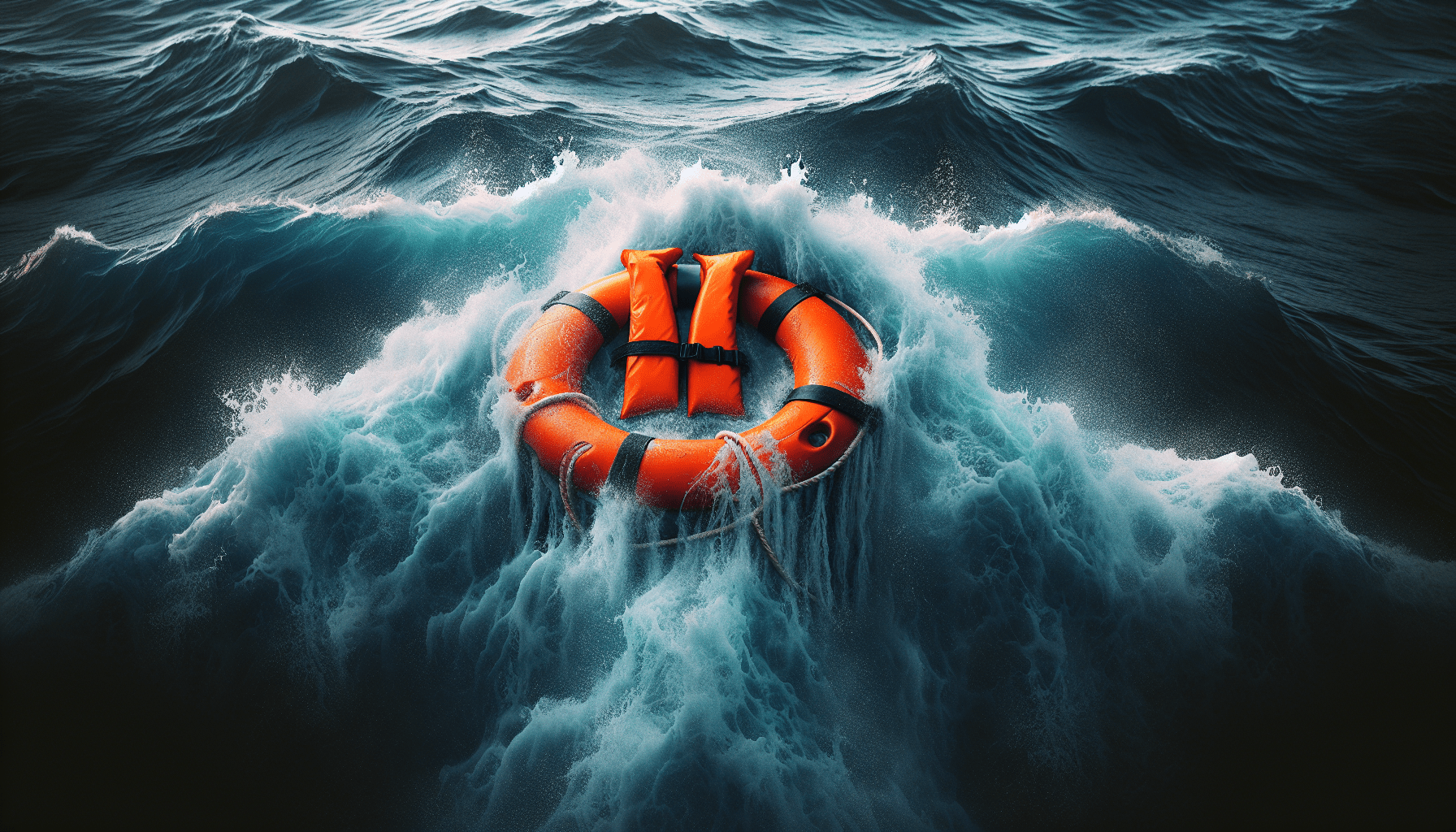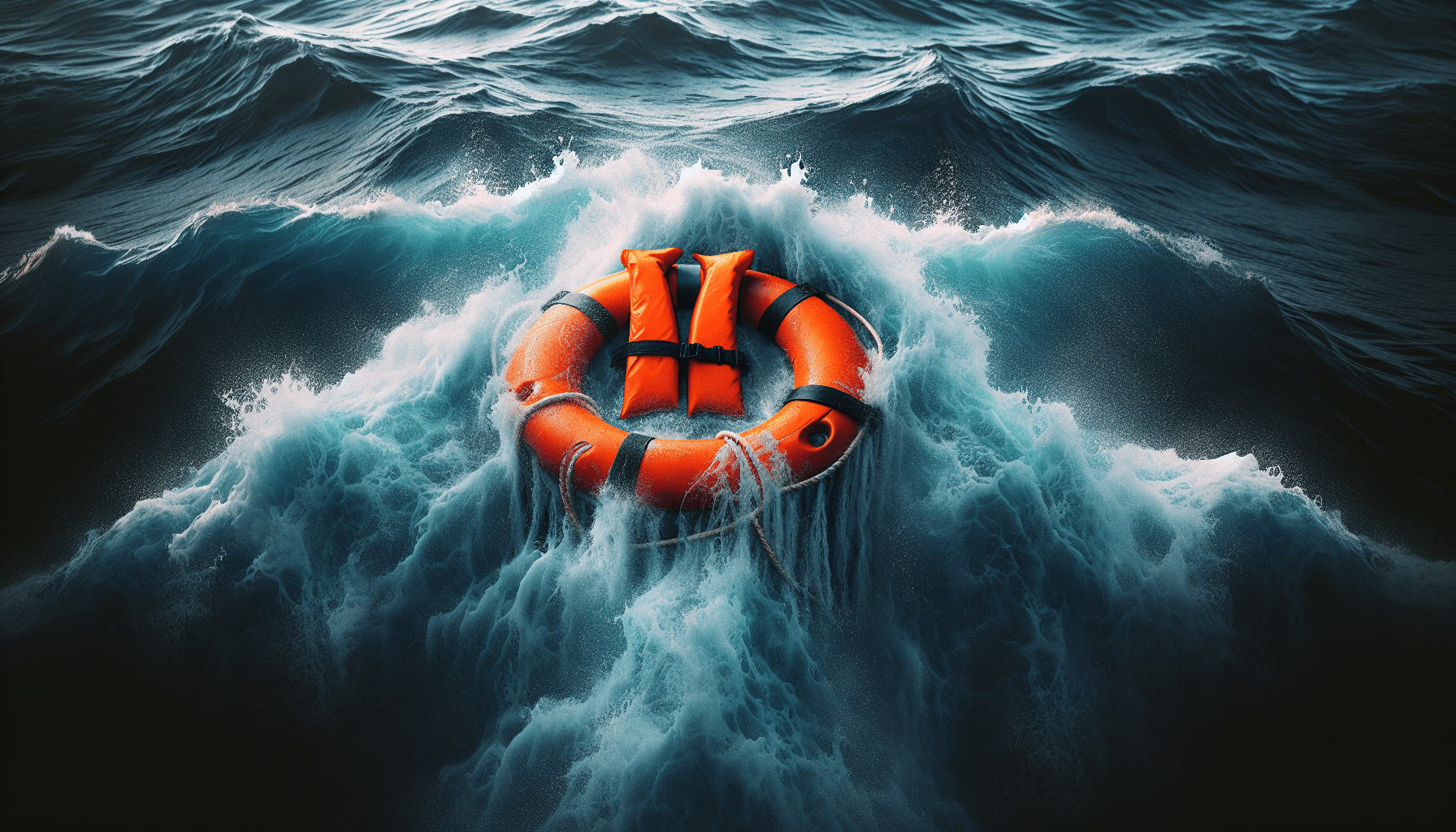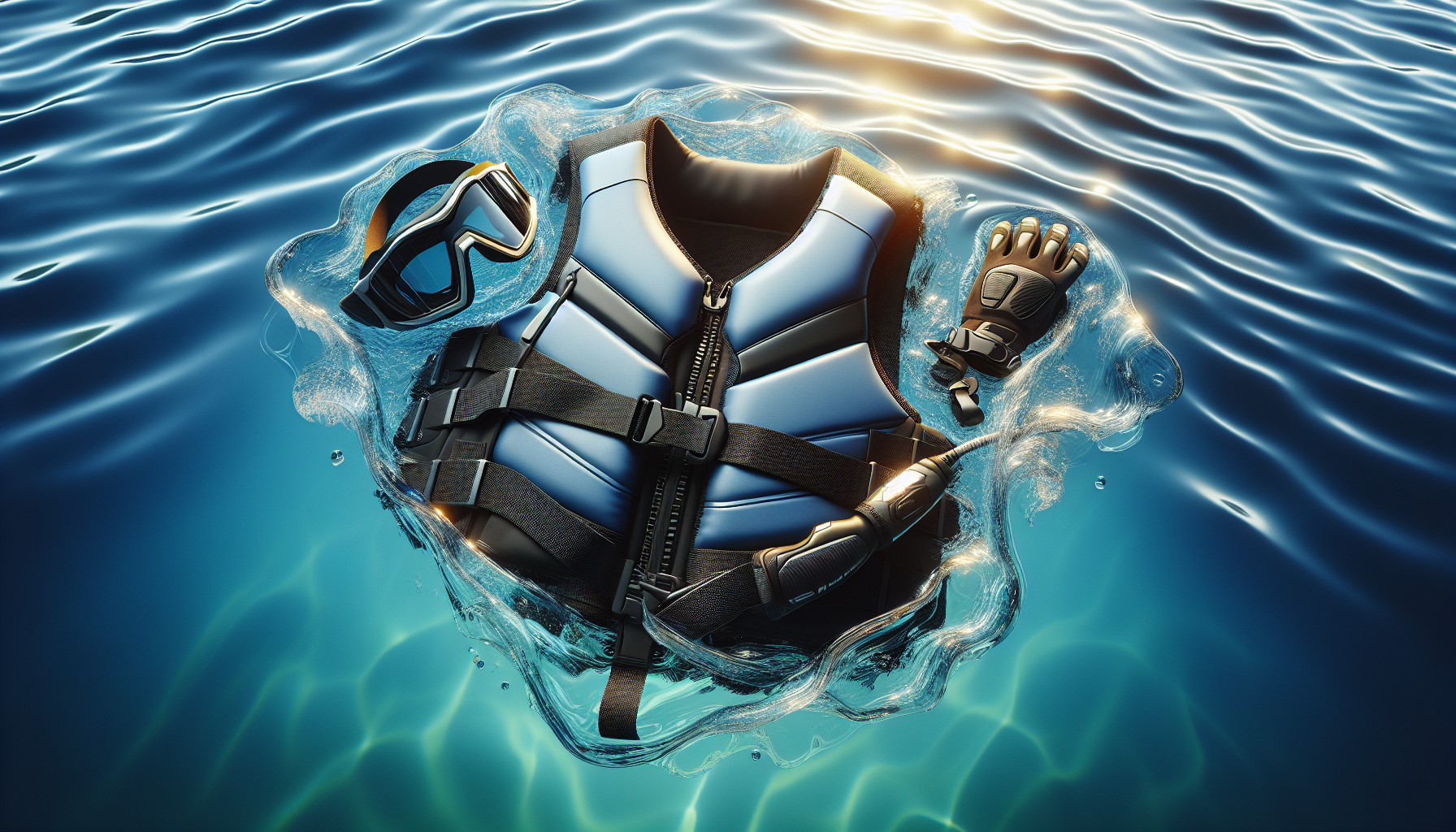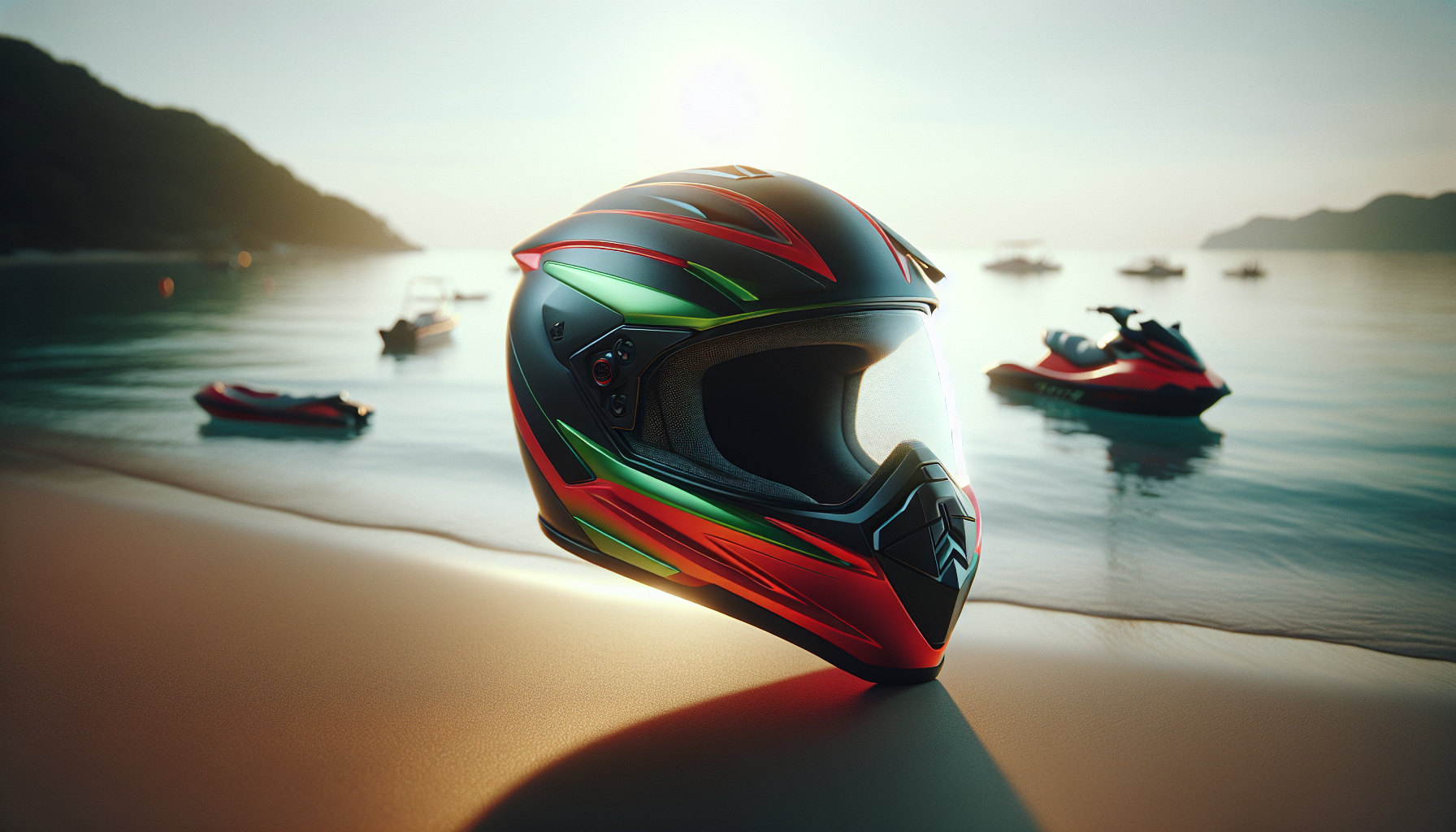What Should You Do If Your PWC Flipped Over?

What should you do if your PWC (Personal Watercraft) flipped over? Accidents happen, and it’s important to be prepared with the right knowledge to handle the situation effectively. Whether you’re a seasoned jet skier or a beginner, knowing how to respond when your PWC flips over can make all the difference in ensuring your safety and minimizing damage. In times like these, having a reliable and knowledgeable company like A2Z Powersport by your side is invaluable. A2Z Powersport, located at the Fort Morgan Marina in Orange Beach, AL, is your go-to company for all things Jet Ski-related. With their expertise in the industry, they can provide you with the guidance and resources you need to navigate the waters safely.
What Should You Do If Your PWC Flipped Over?
If you find yourself in the unfortunate situation where your personal watercraft (PWC) has flipped over, it’s important to stay calm and composed. Assessing the situation and ensuring personal safety should be your first priorities. Here, we will provide you with a comprehensive guide on what steps to take if your PWC flips over, as well as preventative measures to avoid such incidents in the future and the importance of seeking professional help and safety courses.
Assess the Situation
Stay calm and composed
When your PWC flips over, it’s essential to remain calm and composed. Panicking will only make the situation more difficult to handle. Take a deep breath, stay focused, and remember that you can handle this situation with a level head.
Check for injuries
Before proceeding with any actions, check yourself and any passengers for injuries. Safety should always be your top priority. If anyone is injured, seek medical attention immediately.
Determine the depth of water
Check the water depth around you before attempting to flip the PWC back upright. If the water is too shallow, you may risk causing further damage to the PWC or injuring yourself. If the water is deep enough, you can proceed with the flipping process.
Inspect the surroundings
Take a moment to inspect your surroundings. Look for any potential hazards or obstacles that may impede the flipping process or cause further damage. Clear away any debris if possible to ensure a safe workspace.
Secure the flipped PWC
Before starting the flipping process, it’s crucial to secure the flipped PWC to prevent it from drifting away or causing harm to others. Use ropes or any available means to keep the PWC in place.
Ensure Personal Safety
Wear a life jacket
Before taking any further actions, make sure you and any passengers are wearing life jackets. Life jackets can potentially save lives in emergency situations and should always be worn while operating a PWC.
Take note of other passengers
Ensure the safety and well-being of any other passengers. Check if they are capable of assisting in the flipping process or if they require immediate help. Communicate with them and provide reassurance during this stressful situation.
Assist anyone in need
If any passengers are injured or unable to assist with the flipping process, provide them with the necessary care and attention. Do not hesitate to call for professional help if required. Your priority should be ensuring everyone’s safety and well-being.
Flip the PWC
Gather a group of people if possible
Flipping a PWC back upright can be a challenging task, especially on your own. If there are others nearby who can assist you, gather a group of people to help with the flipping process. The more helping hands, the easier and safer it will be.
Coordinate the flipping process
Before attempting to flip the PWC, it’s important to coordinate and assign roles to the individuals assisting you. Establish clear communication and ensure everyone understands their tasks and responsibilities during the process. This will help maintain a safe and organized flipping process.
Use proper lifting techniques
To avoid injuring yourself or others while flipping the PWC, it’s crucial to use proper lifting techniques. Bend your knees, keep your back straight, and lift with your legs. Avoid twisting or jerking motions that might strain your back or cause the PWC to shift unexpectedly.
Flip the PWC back upright
With the assistance of the group, carefully lift and flip the PWC back upright. Take it slow and steady, ensuring that the PWC is balanced and stable throughout the process. Once the PWC is right-side up, secure it to prevent it from flipping over again.
Drain the Water
Remove the drain plugs
After the PWC is back upright, it’s essential to remove the drain plugs. These plugs allow the water inside the PWC to drain out. Locate the drain plugs and remove them to initiate the draining process.
Tilt the PWC back and forth
To facilitate the drainage, tilt the PWC back and forth gently. This motion will help dislodge any remaining water inside the compartments. Be cautious not to tip the PWC too far, as it may cause water to enter other areas or result in further damage.
Allow water to drain completely
Depending on the size of the PWC and the amount of water inside, the draining process may take some time. Be patient and allow the water to drain completely. Ensure there is no water pooling in any compartments before proceeding to the next step.
Inspect for any leaks
While draining the water, inspect the PWC for any signs of leaks. Look for water flowing from areas where it shouldn’t be, such as cracks or openings. Identifying leaks early is crucial to prevent further damage and ensure the safety of future rides.
Check for Damage
Inspect the hull for cracks or dents
Once the water has fully drained, thoroughly inspect the hull of the PWC for any cracks, dents, or other forms of damage. Repairing the hull should be a priority to maintain the structural integrity of the PWC.
Examine the engine and electrical components
Check the engine and electrical components of the PWC for any signs of damage. Look for water ingress or corrosion, as these can impact the performance and safety of the PWC. If you notice any issues, consult a professional repair specialist.
Assess the fuel system
Inspect the fuel system for any damage or signs of water contamination. Water in the fuel can cause engine issues and affect the overall performance of the PWC. If you suspect water contamination, consult a mechanic or a professional repair specialist.
Look for any signs of water damage
Water damage can extend beyond the visible components of the PWC. Check for any signs of water damage in areas such as the seats, storage compartments, or safety equipment. Addressing water damage promptly will help prolong the lifespan of your PWC.
Restart the PWC
Clear any water from the engine compartment
Before attempting to restart the PWC, ensure that the engine compartment is free from water and moisture. Use towels or other absorbent materials to soak up any remaining water. A dry engine compartment will prevent potential damage to the engine.
Check spark plugs and ignition system
Inspect the spark plugs and ignition system to ensure they are in good condition. Remove any excess water or debris and check for any signs of damage or corrosion. Faulty spark plugs or ignition systems can prevent the PWC from starting.
Restart the PWC according to manufacturer’s instructions
Follow the manufacturer’s instructions to restart the PWC properly. Each model may have specific steps and requirements for engine startup. Adhering to these instructions will minimize the risk of further damage and ensure a smooth restart.
Listen for any unusual noises
After restarting the PWC, listen attentively for any unusual noises or vibrations. Unusual sounds can indicate underlying issues with the engine or other components. If you notice anything out of the ordinary, seek professional help to diagnose and resolve the problem.
Retrieve Loose Items
Secure any loose items in the water
During the flipping and draining process, it’s common for loose items to fall into the water. Securely tie ropes to these items and retrieve them from the water, ensuring they do not float away or cause harm to other watercraft users.
Collect floating accessories
If any accessories or equipment were floating in the water, collect them and inspect for damage. Items such as personal flotation devices, ropes, or towable devices should be thoroughly checked before continuing your PWC ride.
Retrieve personal belongings
If any personal belongings have fallen into the water, retrieve them once the situation is safe. Inspect these items for water damage and dry them thoroughly to prevent any further issues. Taking care of your personal belongings is essential for a pleasant outing.
Prevent Future Incidents
Be mindful of weight distribution
Proper weight distribution is crucial for maintaining balance on a PWC. Be mindful of how you and any passengers are seated. Distribute weight evenly to prevent the PWC from becoming unstable, especially during sharp turns or maneuvers.
Avoid sharp turns at high speeds
Sharp turns at high speeds can cause a PWC to become unstable and potentially flip over. It’s essential to exercise caution and avoid making sudden, sharp turns when operating your PWC. Slow down before initiating turns to maintain control and prevent accidents.
Stay within safe speed limits
Adhering to safe speed limits is essential for the safety of everyone on the water, including yourself. Each PWC has a maximum speed limit set by the manufacturer. Ensure you stay within this limit and adjust your speed according to environmental conditions.
Follow manufacturer’s guidelines
To maintain the optimal performance and safety of your PWC, it’s crucial to follow the manufacturer’s guidelines and recommendations. These guidelines typically include maintenance schedules, pre-ride checks, and specific operation instructions. Familiarize yourself with these guidelines and follow them diligently.
Regularly maintain and service the PWC
Regular maintenance and servicing are essential to keep your PWC in optimal condition. Regularly check and maintain the engine, fuel system, electrical components, and overall structure of the PWC. Follow the recommended servicing intervals and consult professionals for any necessary repairs or maintenance.
Seek Professional Help
Contact a PWC repair specialist
If you notice any persistent issues or damage to your PWC after it has flipped over, it’s best to contact a professional PWC repair specialist. These experts have the knowledge and experience to diagnose and resolve any mechanical or structural problems.
Consult with a mechanic
For any issues related to the engine or mechanical components, consult with a mechanic who specializes in watercraft engines. They can provide expert advice and assistance in identifying and fixing any engine-related problems.
Get a professional assessment
If you are unsure about the extent of the damage or if you suspect underlying issues, it’s wise to seek a professional assessment. Professionals can provide a comprehensive evaluation, ensuring that all necessary repairs or replacements are carried out correctly.
Consider Safety Courses
Enroll in a personal watercraft safety course
To enhance your knowledge and skills in operating a PWC safely, consider enrolling in a personal watercraft safety course. These courses cover various topics such as navigation, emergency procedures, and rescue techniques. They can greatly improve your confidence and abilities on the water.
Learn basic rescue techniques
Knowing basic rescue techniques can be invaluable in emergency situations. These techniques include how to assist someone in distress or retrieve a person from the water in a safe and efficient manner. Learning these techniques can potentially save lives and prevent further accidents.
Improve personal watercraft handling skills
Enhancing your personal watercraft handling skills can significantly reduce the risk of accidents and incidents. Practice maneuvers such as turning, stopping, and controlling the PWC at different speeds. This will improve your overall control and responsiveness on the water.
Stay up-to-date with safety guidelines
Safety guidelines and regulations evolve over time. Make sure you stay up-to-date with the latest safety recommendations and follow them diligently. This includes staying informed about local laws or regulations regarding PWC use and operating responsibly on the water.
By following these comprehensive steps and taking preventative measures, you can effectively handle the situation if your PWC flips over. Prioritizing safety, ensuring proper maintenance, seeking professional help when needed, and continuously improving your skills will make your PWC experience safer and more enjoyable. And if you’re ever in Orange Beach, AL, consider renting your PWC from A2Z Powersport, who are experts in the industry and provide top-quality service and equipment.








